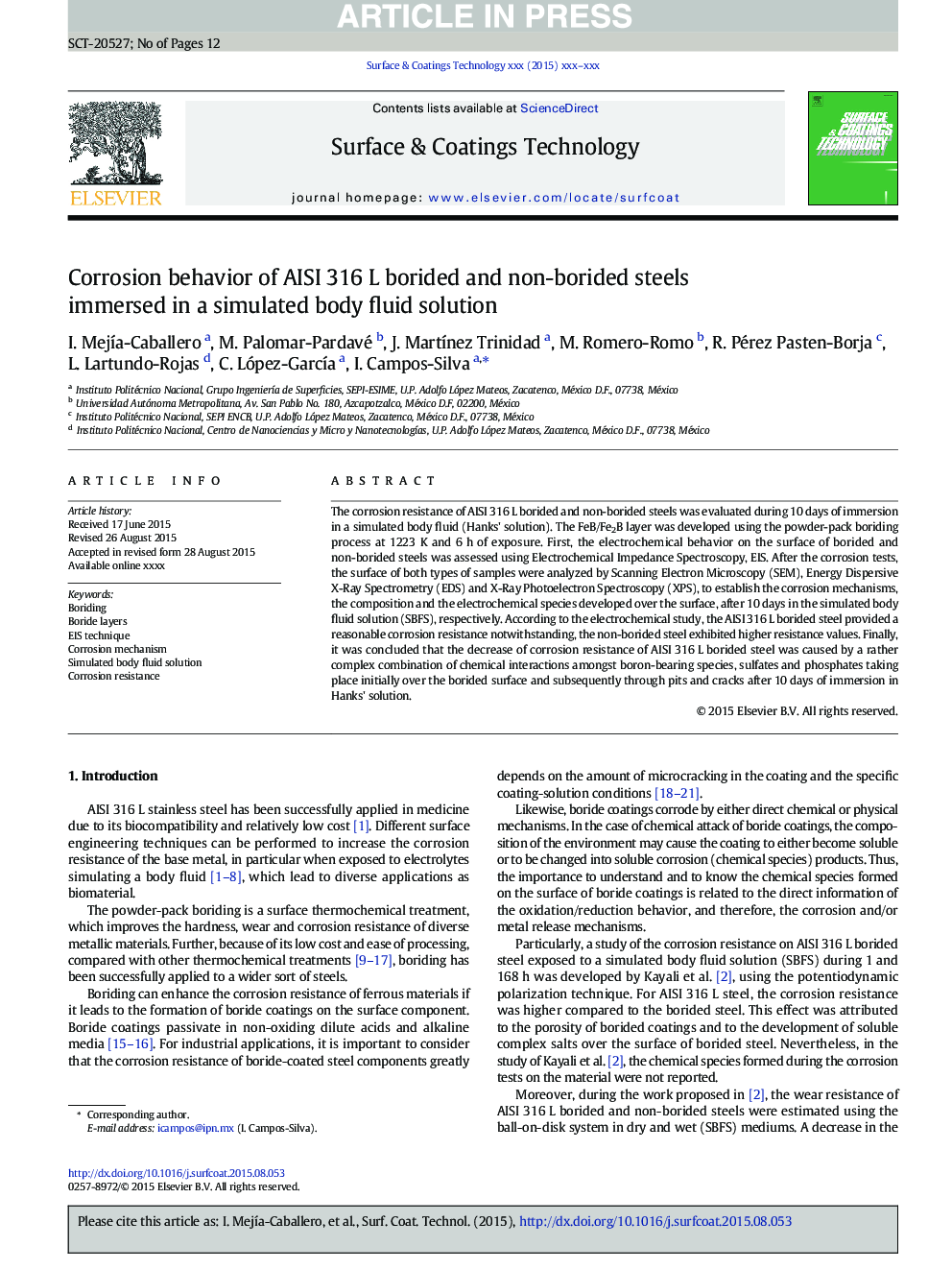| Article ID | Journal | Published Year | Pages | File Type |
|---|---|---|---|---|
| 8026238 | Surface and Coatings Technology | 2015 | 12 Pages |
Abstract
The corrosion resistance of AISI 316Â L borided and non-borided steels was evaluated during 10Â days of immersion in a simulated body fluid (Hanks' solution). The FeB/Fe2B layer was developed using the powder-pack boriding process at 1223Â K and 6Â h of exposure. First, the electrochemical behavior on the surface of borided and non-borided steels was assessed using Electrochemical Impedance Spectroscopy, EIS. After the corrosion tests, the surface of both types of samples were analyzed by Scanning Electron Microscopy (SEM), Energy Dispersive X-Ray Spectrometry (EDS) and X-Ray Photoelectron Spectroscopy (XPS), to establish the corrosion mechanisms, the composition and the electrochemical species developed over the surface, after 10Â days in the simulated body fluid solution (SBFS), respectively. According to the electrochemical study, the AISI 316Â L borided steel provided a reasonable corrosion resistance notwithstanding, the non-borided steel exhibited higher resistance values. Finally, it was concluded that the decrease of corrosion resistance of AISI 316Â L borided steel was caused by a rather complex combination of chemical interactions amongst boron-bearing species, sulfates and phosphates taking place initially over the borided surface and subsequently through pits and cracks after 10Â days of immersion in Hanks' solution.
Related Topics
Physical Sciences and Engineering
Materials Science
Nanotechnology
Authors
I. MejÃa-Caballero, M. Palomar-Pardavé, J. MartÃnez Trinidad, M. Romero-Romo, R. Pérez Pasten-Borja, L. Lartundo-Rojas, C. López-GarcÃa, I. Campos-Silva,
